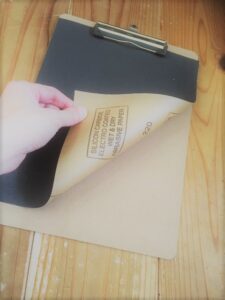This is a tracing sheet to practice writing the alphabet. Use it before practicing the alphabet or to encourage hand development.
After practicing the basic shapes and hand movements, it is effective to practice writing the alphabet.
Free downloads.
Features of this tracing
I have picked up the most basic shapes in forming the alphabet. This is a tracing practice sheet for practicing strokes and letters.
Simple tracing is designed to keep the information on the sheet as small as possible, so that you can focus on the information you need.
You are the one who knows your child best, and you can make this tracing sheet work for you.
How you use it is up to you!
・Simple tracing (plain)
This is a plain sheet with no frame or guide.
・Simple tracing (with frame)
To make the space easier to understand, there is a frame in the background. You can paint the inside of the frame with your favorite color to make it even easier to understand.
・Simple tracing (with marks)
There is a mark on the line. This makes it easier to draw attention to the line. It also helps to keep your attention.
It is designed to be easy to read.
I colored the area around the dotted lines in gray to create a clear contrast. I also kept the number of lines and shapes to a minimum. It may not seem like a lot, but by creating a lot of white space, it is easier to read and draw attention to the necessary information.
Simple design with no illustrations.
No illustrations are included so that you can focus on the information you need to practice.
You can use it in an infinite number of ways depending on your ingenuity.
You can put your child’s favorite stickers on it, or draw their favorite characters on it. The simplicity of this product makes it highly expandable.
Precautions for use
Copyright © Therapist Yu.
Unauthorized reproduction or diversion of text or images from this site is prohibited.
There is no problem if you want to use it at home or in a medical education setting. Please feel free to use it.
Free Download
One more idea
Putting sandpaper under the sheet will make it easier to feel your hands.

By changing the coarseness of the sandpaper, you can strengthen or weaken the sensation from your hands.
However, if it is too rough, it will be difficult to write on.
As shown in the photo, place the sheet in a binder, use sandpaper as a base, and place the tracing sheet on top.
Developmental stages of characters and copying as a guide
The development of shape recognition and shape copying has been reported as follows.
This is just a report from an academic paper, so there are individual differences in actual children.
We recommend that you start with sheets that your child enjoys doing, regardless of age.
| 1 year and 4 months~ | Playing with objects to fit them into a specific shape, such as molding, puzzle boxes, etc., and doodling. |
| 2 years and 6 months~ | Draw circles, lines, and other shapes, albeit irregularly shaped. |
| 3 years old | 60~80% of children can draw circles, only about 3% can draw squares. |
| 4 years old | More than 90% of children can draw circles, 30~40% can draw squares, and about 20% can draw triangles. |
| 5 years old | More than 95% of children can draw circles, 60~70% can draw squares, and 50~70% can draw triangles. |
| 6 years old | 100% of children can draw circles, 70~80% of children can draw squares, 75~80% of children can draw triangles, and 30~40% of children can draw rhombuses. |
It’s all about having fun!
No matter what it is, it is important to enjoy the process. If you try to force yourself to practice, you will not get good results. You may put your child’s favorite stickers on the sheet yourself. You can also draw your child’s favorite character.
Create your own ideas to make it fun and interesting for your child!
reference
・Masato Kubota: A Study on the Development of Figure Copying Ability. Jap. J. of educ.Psychol.VOL.XVIII,No.1.57-64.1970
・Tomoko Mori et al : Research on children’s understanding of quantity and figures Creation of a developmental process chart for devising teaching methods for childcare content. Seiwa Junior College Minutes (4).56-63.2018




